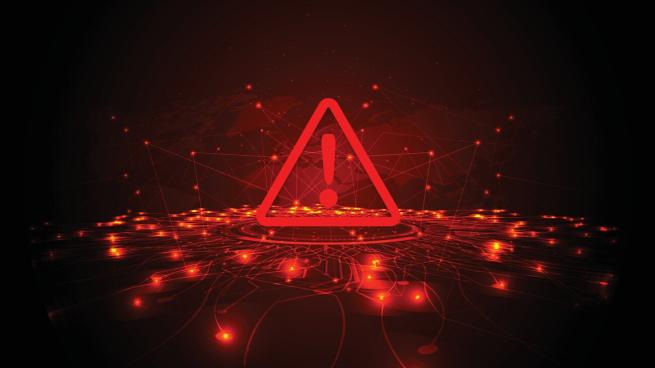
For any business, dealing with a cyber attack is an undeniably stressful situation. The immediate fallout might include lost man hours and financial setbacks, but it can also take a toll on client trust.
While it might be challenging for businesses across various industries to entirely prevent cyberattacks, they can certainly learn from them to strengthen future defenses. This is where post-incident forensic analysis can be an important tool for businesses.
Breaking Down Post-Incident Forensic Analysis
Post-incident forensic analysis is a comprehensive approach to breaking down each component of a cyber attack and understanding it better. Even though post-incident forensic analysis is primarily associated with investigations of breaches that have already happened, they can also be used proactively to prevent current attacks from escalating and contain them as soon as possible.
The process typically involves the following steps:
Identification and Containment
While the aftermath of a cyberattack can be apparent, the source of a breach can be difficult to identify if a business hasn’t implemented the right security measures.
The first step of post-incident forensic analysis is initiated with advanced threat identification tools like security information and event management (SIEM) to successfully identify the source of a threat and prevent a breach from becoming worse.
Collection
For an organization to learn from a cyberattack, knowing its origin and how it developed is critical. This all starts with collecting data logs and other digital evidence to give investigators enough information to diagnose system and network vulnerabilities.
Depending on the size of the business and its infrastructure, this process can take a lot of time and requires a deep understanding of how to navigate complex security systems.
Analysis
The analysis phase involves a deep dive into all of the captured events involved with a cyberattack. This examination is used to determine exactly how intruders gained access, the kind of systems they accessed, and the methods they used to bypass security protocols.
To get a complete picture, many investigations make use of sophisticated analytics software with machine learning capabilities. These tools help to reveal hidden patterns and insights that might otherwise go unnoticed.
Detailed Reporting
Once an investigation wraps up – which can range from a few weeks to several months based on the attack’s intensity – it’s essential to compile a thorough report. These types of reports serve two purposes.
First, they offer a complete account of the cyberattack, which can be invaluable for shaping future security strategies and risk evaluations. Second, in sectors like healthcare or finance where there are strict compliance norms, producing a comprehensive report isn’t just recommended, it’s often mandated by law.
In both situations, the reports that are generated will need to be broken down, analyzed and presented in a way that’s easy to understand and can be widely distributed if needed.
Best Practices for Post-Incident Forensic Analysis
While the necessary steps of post-incident forensic analysis usually remain consistent across various industries, there’s room for unique approaches to enhance the efficiency and outcome of the process.
Here are some recommended strategies to guide a thorough a successful analysis:
Complete a SOC Audit
To bounce back effectively from a cyberattack, a deep understanding of your organization’s operational landscape is crucial. Regularly conducting a SOC (Security Operations Center) audit can help you preempt potential threats and spot areas where your security might be lacking.
A SOC audit involves a thorough review of your entire security infrastructure, the different policies that support it, and any incident response plans and procedures you have to recover from major business disruptions.
Invest in Penetration Testing Services
Putting priority into advanced security solutions can be a great way to mitigate the risks of a cyberattack. However, another effective way to gain an intimate knowledge of your network infrastructure is by investing in penetration testing services.
Penetration tests executed by skilled cybersecurity professionals help to replicate the same tactics and techniques used by real-world cybercriminals, injecting a human element into the security assessment process. Using penetration services can many times highlight vulnerabilities that often go unnoticed by traditional security solutions and can help businesses have a clearer picture of the exact steps a hacker would have taken.
Make Use of AI-Driven Technologies
Because of the large volumes of data that post-incident forensics teams need to analyze, automation can be a potential lifesaver for organizations that need more in-depth incident response support.
AI-driven technologies are now used regularly to significantly decrease the timelines associated with forensics investigations while also improving the relevance of the insights they collect. UBA (user behavior analysis) is the perfect use case of how AI can be used to support cyber security initiatives.
UBA tools watch and track end-user behavior while quickly identifying specific patterns that point to potential malicious activity. Using these types of systems, organizations can sift through their data much quicker and streamline their entire incident response process.
Create a Stronger Cybersecurity Culture
While many companies believe they’re unlikely to be targeted by a cyberattack, the reality is that any organization can experience one. However, with a solid post-incident response strategy in place, you’ll not only recover from an attack, but also build a stronger cybersecurity culture for your business.
About the Author
Nazy Fouladirad is President and COO of Tevora, a global leading cybersecurity consultancy. She has dedicated her career to creating a more secure business and online environment for organizations across the country and world. She is passionate about serving her community and acts as a board member for a local nonprofit organization.







